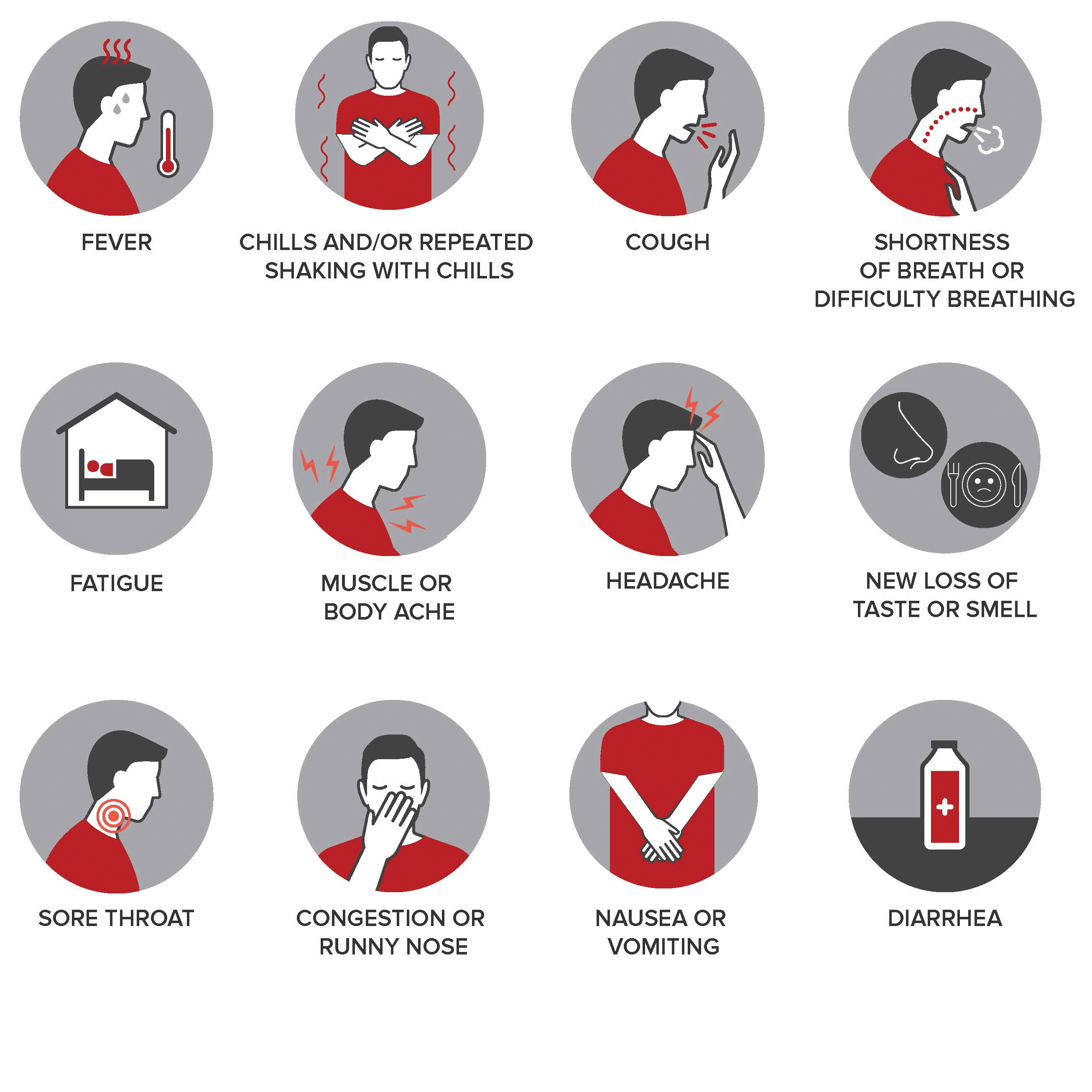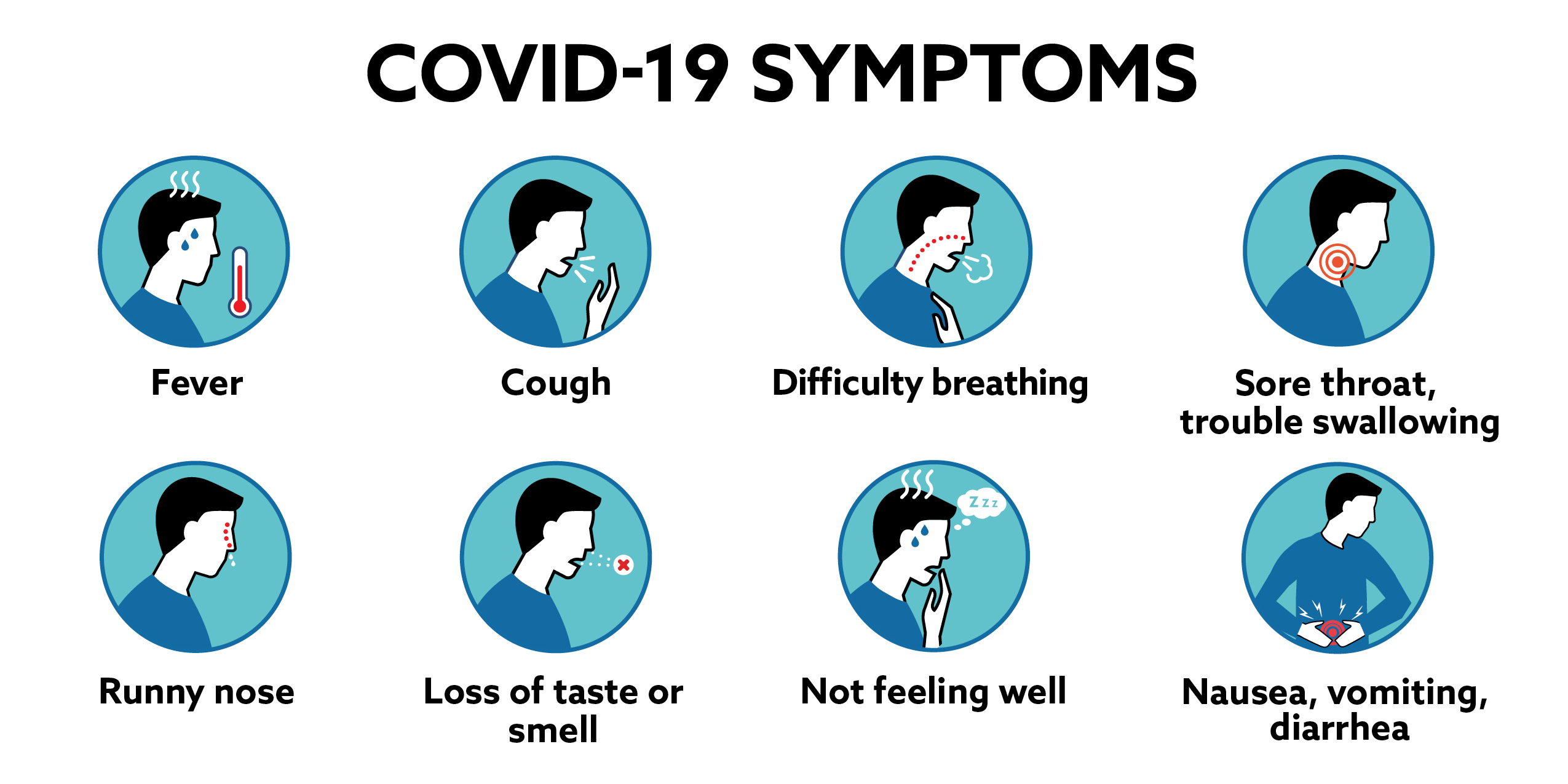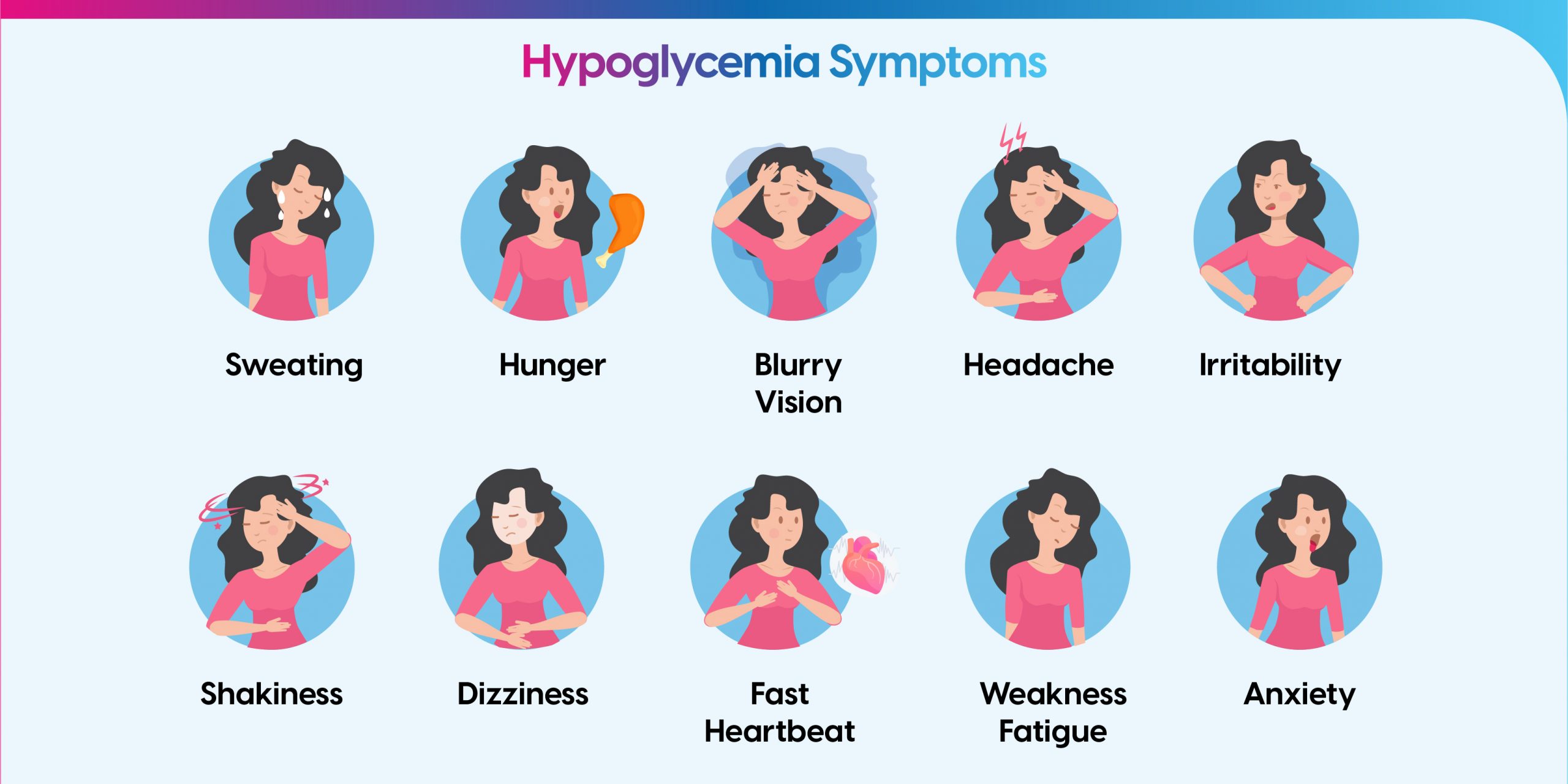Feeling Under The Weather - A Symptom Of Being Human
It’s a feeling we all know, a little something off, a quiet whisper from our bodies that perhaps things aren't quite as they usually are. That odd ache, the slight sniffle, or just a general sense of not being ourselves. These moments, you know, are just a very common part of being alive, a regular part of what it means to be a person. It’s almost as if our bodies have their own special language, sending out little signals when something needs a bit of attention, or at least a second look.
When these small changes pop up, it’s only natural to wonder what they might mean. We might find ourselves thinking, "What exactly is this feeling?" or "Is this something I should be concerned about?" That little flicker of worry, or maybe just plain curiosity, often leads us to seek out some sort of explanation. It's a very human thing to want to make sense of what our bodies are telling us, to try and piece together the puzzle of how we are feeling.
Luckily, these days, there are ways to get a bit of help with those questions, even when it’s late at night or you just want a quick idea. Digital tools have come along that can, in a way, offer some initial thoughts on what might be going on. They provide a place to start when you’re trying to figure out those small signs that show up, which are, you know, just a regular part of being human.
- Ryan Guzman Wife
- Poor Things Trailer
- Judi Dench Tv Programmes
- What Do Alligators Do During Hurricanes
- The Goldbergs
Table of Contents
- What's Happening in Our Bodies - A Symptom of Being Human
- How Do We Know Something is Off - A Symptom of Being Human
- Why Do We Look for Answers?
- Getting a Sense of What's Going On - A Symptom of Being Human
- Are These Tools Really Helpful?
- When You Need a Quick Look - A Symptom of Being Human
- What Makes These Helpers Work?
- The People and the Smart Systems Behind It - A Symptom of Being Human
What's Happening in Our Bodies - A Symptom of Being Human
Our bodies are, you know, incredibly intricate things, always working, always changing, and sometimes, they send us little messages. These messages often show up as what we call symptoms. A symptom, in its simplest form, is just a way our body tells us that something might be a little different from its usual state. It could be a feeling, like a throbbing sensation, or a change you notice, like feeling more tired than normal. This natural occurrence, a symptom of being human, is a constant reminder of our physical presence.
There are times when these signals are quite clear, and other times when they are a bit more subtle, almost like a quiet whisper. We might feel a dull ache in a joint, or perhaps a slight tickle in the throat that just won't go away. These are all personal sensations, things that only we can truly feel and describe. It’s a very private experience, this feeling of symptoms, and it really highlights the personal connection we have with our own physical self.
Consider, for a moment, how a tool like a symptom checker might come into play here. It’s set up, you see, with something like a body picture, a sort of visual aid that helps you point to where you are feeling these things. This can, in a way, make it easier to get a clearer picture of what those internal messages might be trying to tell you. It helps you, basically, connect what you are feeling inside to a more general idea of what might be happening. This initial step of figuring things out is, truly, a core part of responding to a symptom of being human.
How Do We Know Something is Off - A Symptom of Being Human
When we talk about things that point to an illness or a body problem, we often mention two distinct ideas: signs and symptoms. Signs are, well, things that others can see or that can be measured from the outside. Think of a rash on your arm, or maybe a fever that someone can check with a thermometer. These are things that are, in a way, out there for everyone to notice, or for a machine to pick up. They are objective, meaning they are facts that don't change based on who is looking.
Symptoms, on the other hand, are quite different. These are the feelings you get, the things only you experience and can talk about. A headache, for example, is something you feel inside your head. No one else can feel your headache, can they? Or a feeling of being dizzy, that's a personal sensation. These are your reported experiences, your own personal take on what's going on inside your body. It's really just a fundamental part of what it means to have a body, a very real symptom of being human.
So, when we talk about a symptom checker, it's really about helping you put words to those personal feelings. You tell the system what you are feeling, those subjective experiences that are yours alone. It then tries to connect those feelings to possible explanations. This process, in a way, bridges the gap between your internal experience and external information, helping you get a better handle on what might be causing those feelings. It’s about making sense of those internal messages that are, you know, a constant symptom of being human.
Why Do We Look for Answers?
It’s a basic human need, isn't it, to understand what’s going on around us, and especially what’s happening within our own bodies? When a new feeling pops up, or an old one sticks around longer than it should, that natural curiosity kicks in. We want to know why. Is it something simple that will pass quickly, or something that needs more attention? This desire for clarity, for a bit of insight into our own physical state, is a very strong pull for most people.
Nobody likes feeling uncertain, especially when it comes to their well-being. That feeling of not knowing can be a little unsettling, can't it? So, when medical symptoms make an appearance, we often look for something that can help us figure out what might be the reason for them. It’s about getting a bit of peace of mind, or at least a starting point for what to do next. This search for information is, basically, a way of dealing with the unknown.
This is where those digital tools step in. They are set up to assist you in getting a sense of what might be causing your particular feelings. You just put in a few bits of information about what you are experiencing, and maybe some general health details, and then, you know, the system can show you a list of things that could be related. It’s a way to get some initial ideas, which is really quite helpful when you are trying to make sense of your body’s signals.
Getting a Sense of What's Going On - A Symptom of Being Human
The idea of getting a quick idea of what might be happening with your body is, you know, pretty appealing. These tools are often made to be simple and quick to operate. You just, basically, put in all the feelings you are having, and then you get a list of things that might be the reason for them. Along with that, you often get some guides that explain what causes these things, what other feelings might show up, how someone might figure out what it is, and what ways there are to feel better. This quick access to information is a real help when you're trying to figure out a symptom of being human.
It’s a bit like having a helpful friend who knows a lot about health, always ready to offer some initial thoughts. You can, for example, just share a few details about your feelings and some very basic health information, and the tool will show you some possible matches. This kind of immediate feedback can be quite comforting, especially when you are feeling a bit unsure about what’s happening with your body. It’s a straightforward way to get some preliminary ideas.
This kind of immediate access to information, you see, means you don't have to wait to get some sense of what's going on. It's available whenever you need it, which is, in some respects, a truly valuable thing. Being able to get care suggestions at any hour, through a patient portal, makes it very convenient. It’s a resource that’s always there, helping you to address those feelings that are, after all, a common symptom of being human.
Are These Tools Really Helpful?
When you're feeling a bit off, the thought of trying to figure out what's happening can feel, well, a little overwhelming. That's where tools like digital health assistants and symptom checkers can really come into their own. They offer a way to get some initial thoughts without having to, you know, immediately make an appointment or even leave your house. This can be a very helpful first step for many people, providing a bit of clarity when you're feeling uncertain.
These helpers are set up to take the feelings you put in and then show you a list of things that might match. More than that, they often give you advice on when it might be a good idea to talk to a doctor. This guidance is pretty important, as it helps you decide if what you're feeling is something you can watch for a bit, or if it's something that really needs a professional look. It's about getting smart about your body, which is, basically, a very sensible approach to a symptom of being human.
Some of these systems even let you look through a list of feelings from A to Z, so you can just browse around if you’re not quite sure how to describe what you’re experiencing. And if you still have questions, many places offer ways to get more information, like calling someone to chat with a health educator or looking at their website. This range of options means you can get help in a way that feels comfortable for you. It’s about making information more accessible, so you can deal with those feelings that are, in a way, just a normal part of being human.
When You Need a Quick Look - A Symptom of Being Human
Imagine you wake up with a strange new feeling, something you haven't felt before. Your mind starts to wonder, and you just want a quick idea of what it might be. That's when a symptom checker can be, you know, a very useful thing. It’s set up to give you a first look, a preliminary sort of idea about what might be going on. It helps you sort through your feelings and gives you some initial suggestions for what to do next. This kind of immediate help is, in some respects, a real comfort when you're dealing with a new symptom of being human.
These tools are, basically, like a first stop, not the final word, but a good place to begin. They are designed to help you get a sense of things, to point you in a general direction. They can, for example, give you a list of possible things that could be causing your feelings, which can help calm some of that initial worry. It's about getting some information quickly, so you can decide your next steps with a little more confidence.
The ease of putting in your feelings and getting a list of possible matches is, really, a big part of their appeal. It doesn't take much time, and it’s available whenever you need it. This convenience means you can get some ideas about what might be going on with your body, even if it's in the middle of the night. It’s a very practical way to approach those feelings that are, you know, just a regular symptom of being human.
What Makes These Helpers Work?
You might wonder what goes into making these digital tools so they can offer helpful suggestions. Well, they are, in some respects, built on a lot of careful thought and information. For example, some of these symptom checkers are powered by systems that have been put together by people who really know a lot about health data, along with actual doctors, and smart computer systems that can learn and process information. It’s a blend of human knowledge and clever technology, working together.
This means that when you put in your feelings, the system is drawing on a wide pool of information, gathered and organized by experts. It’s not just guessing; it's using patterns and connections that have been identified by people who spend their lives studying health and illness. This foundation of reliable information is, basically, what gives these tools their ability to offer useful initial thoughts. It’s a way of making expert knowledge more widely available, which is, truly, a good thing for anyone dealing with a symptom of being human.
The way these systems work is that they take your reported feelings, those subjective experiences that are yours alone, and then they compare them to a vast store of information. They look for patterns, for common connections between certain feelings and certain body conditions. This allows them to offer a list of things that might be the reason for what you're feeling. It's a bit like having a very large, very organized library of health information at your fingertips, which is, you know, pretty remarkable.
The People and the Smart Systems Behind It - A Symptom of Being Human
When you use one of these digital health helpers, it's worth remembering that there are real people, and very smart systems, behind the scenes making it all work. It’s not just some random collection of facts. Instead, it’s built with the insights of people who study how health information works, along with the deep experience of medical professionals. And then, there are the smart computer programs, which help to process all that information quickly and make connections that might not be immediately obvious to a person. This combined effort is, basically, what gives these tools their ability to offer some good initial ideas.
So, when a system like the Tufts Medicine’s symptom checker helps you figure out what might be causing your feelings and points you towards getting care, it’s because it’s standing on the shoulders of a lot of knowledge. It’s about bringing together the best of human understanding and the power of clever technology to make it easier for people to get some clarity about their health. This support, in a way, is a modern answer to the age-old question of what to do when you feel a bit off, which is, you know, just a universal symptom of being human.
These tools are, in some respects, about making information more accessible and less intimidating. They take complex medical ideas and present them in a way that is easier for everyday people to understand. This helps you get a sense of what might be going on, and it gives you a starting point for any conversations you might have with a healthcare professional. It’s about giving you a little bit of power back when you're feeling uncertain about your body, which is, truly, a very valuable thing for anyone experiencing a symptom of being human.
This article has explored how feeling various sensations is a regular part of being human. It looked at how digital tools can help figure out what these feelings might mean, by letting you put in your experiences and getting possible explanations. The article also covered the difference between what others can see and what you personally feel. It showed how these tools are easy to use and available all the time, and that they are built with knowledge from health experts and smart computer systems.
- Alligator Encounter Billy Horschel Golf Tournament
- Does Wendys Have 50 Nuggets For 10
- Who Is That Guy
- January 13 Horoscope
- Waltons Cast Now And Then

COVID-19 Symptoms | Ohio State Medical Center

Covid Symptoms 2024 Runny Nose - Mona Sylvia

Symptoms